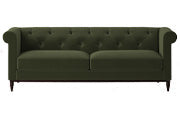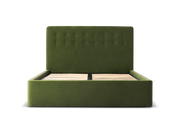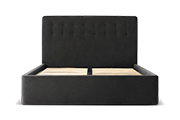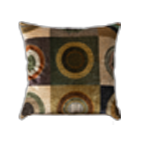Leather is a beautiful material. Soft and supple, yet strong and durable too. It also has the major advantage of aging well, looking better with time and use (given the appropriate leather care and cleaning when needed). However, there is a big difference between well worn leather and damaged leather. And if your leather couch is starting to look a little worse for wear, then you need to take action as soon as possible.
Leather sofa repair can be simple and straightforward, if you catch the problem in time. The longer you leave any issue with your leather, the more complicated and costly it can be to fix it. However, the good news is that in most instances, it is possible to fix leather sofas, and restore them to their former glory.
Although leather can be very tough, as mentioned above, it can also be ripped, punctured and start to crack if not cared for correctly. Below we aim to outline what you need to do when you notice a problem with your leather, with some handy hints and tips on how to keep your leather looking better for longer.
Of course, it is also true that almost all furniture has a certain useful lifespan. Materials wear out and it might just be the right time to invest in a new model. You can find out more about how many years’ service your couch might give you with this guide to how long should a sofa last?
How to repair a leather sofa

Before you start on any leather repairs, it is important to establish the age and condition of the material. Jump straight in with a repair and you might end up doing more harm than good.
If your leather couch is starting to show the first few signs of fading, then it should be straightforward to fix. You can usually fix leather sofa fading with some careful spot touching. You have to try and find some leather dye that closely matches the original colour, and then gently apply with a damp sponge. However, it may be advisable to get a leather specialist in to match the colour and carry out the repair, otherwise you can leave your couch looking patchy.
Another repair you may be able to carry out yourself is to soften old and dry leather. Invest in some specialist leather conditioner, ideally one containing lanolin, and this will keep the material feeling soft and supple. This will also help the leather to keep its colour.
Of course, you don’t have to wait until the leather is old and dry to condition. To keep your couch in good order, you should ideally be applying this every year or so. As always, prevention is better (and more cost effective) than cure.
How to fix a leather sofa when it’s peeling?

If your couch is peeling then this is an indication that it is not 100% genuine leather. If flakes or peeling does happen, this usually means that your couch is bonded or blended leather. There is not much you can do in this case in the long term, although short term improvements may be possible. It may be worth considering replacing your faux leather couch with a genuine leather alternative. There are some stylish leather 2-seater sofas and 3-seater sofas in the Swyft range available at great prices.
Genuine leather does not peel but can crack. This happens when the oils evaporate and the leather dries out. As the leather shrinks and stiffens fissures start to appear on its surface. It’s best to try and prevent cracking by applying a conditioner once a year or so. However, if it is already cracked, then you can apply a water based leather filler, which will help to seal some of the smaller cracks and prevent further damage.
How to fix rips or tears in a leather sofa?

Tears and rips can seem like the end for your leather sofa but they don’t have to be. There are fixes that you can carry out. Most involve gluing a patch to the underside of the leather, and sticking down the two edges of the rip as closely as possible. Remember to trim the torn edges first if they are scrappy. The neater the edges of the tear, the better the fix can be.
If there is still a gap visible where the tear has occurred, this can be fixed with some leather filler which can be coloured to blend in with the original material.
Again, small tears might be fixable at home but if you have a larger tear or rip, it may be better to seek the services of a leather professional. They will be able to more closely match existing colours and have the tools to ensure a more seamless repair.
How to repair a leather sofa from cat scratches?

It is possible to repair small cat scratches with olive oil or specialist leather oil. But these treatments need to be applied quickly. Older and deeper cat scratches may require leather filler and colouring. Again, the more serious the issue the more likely it will be to require a professional’s eye.
Leather sofas can be stylish and elegant but they do take more care than fabric alternatives. But with some simple leather sofa wear and tear repair you can keep yours looking in top condition for years to come. Make the most of your leather sofa with our what colours go with a brown sofa guide. Or, if you decide a leather sofa is too much trouble, check out our fabric sofas buying guide. We have an extensive range of 2, 3 and 4 seater sofas to suit any living space.
If your leather sofa is beyond saving or it’s just time for an upgrade, Swyft’s Model 03 and Model 04 make a great addition to any living space. Available in a range of colours and configurations, they can fit in any living space providing a comfortable and stylish seating area.
 Model 01
Model 01
 Model 02
Model 02
 Model 03
Model 03
 Model 04
Model 04
 Model 05
Model 05
 Model 06
Model 06
 Model 07
Model 07
 Model 08
Model 08
 Model 09
Model 09
 Model 10
Model 10
 Bed 01
Bed 01
 Bed 02
Bed 02



 Single
Single
 Double
Double
 King
King
 Super King
Super King
 Mattresses
Mattresses
 All Beds
All Beds








Want more? Discover interior inspiration and exclusive updates
Sign up to our weekly newsletter for more like this.